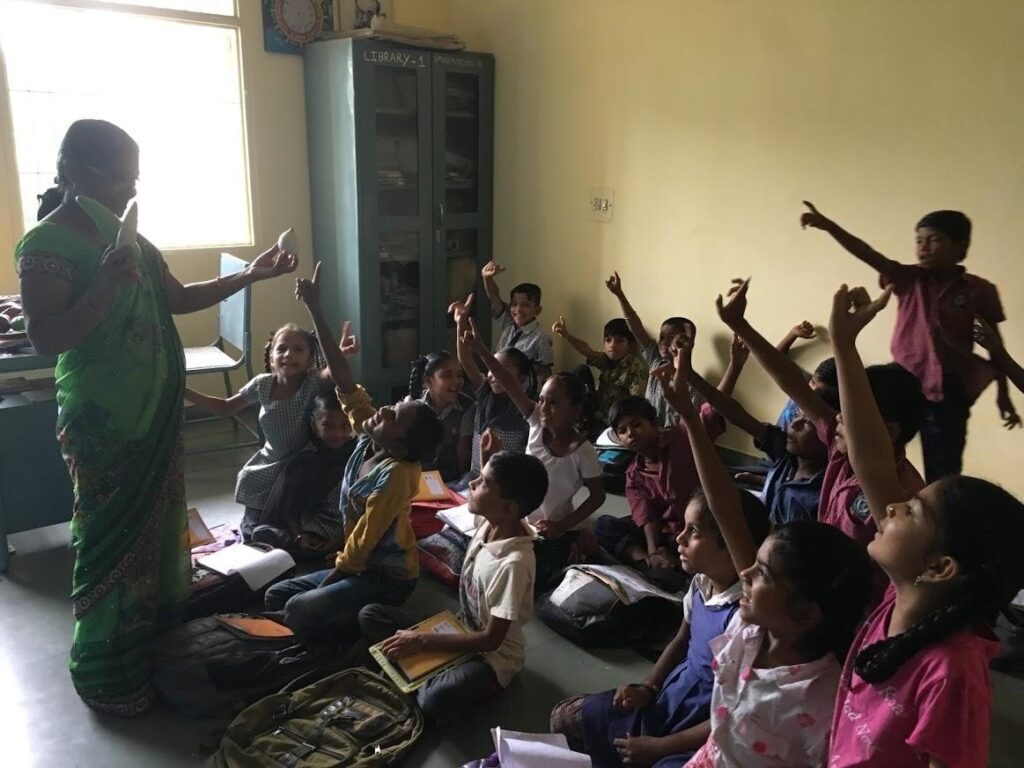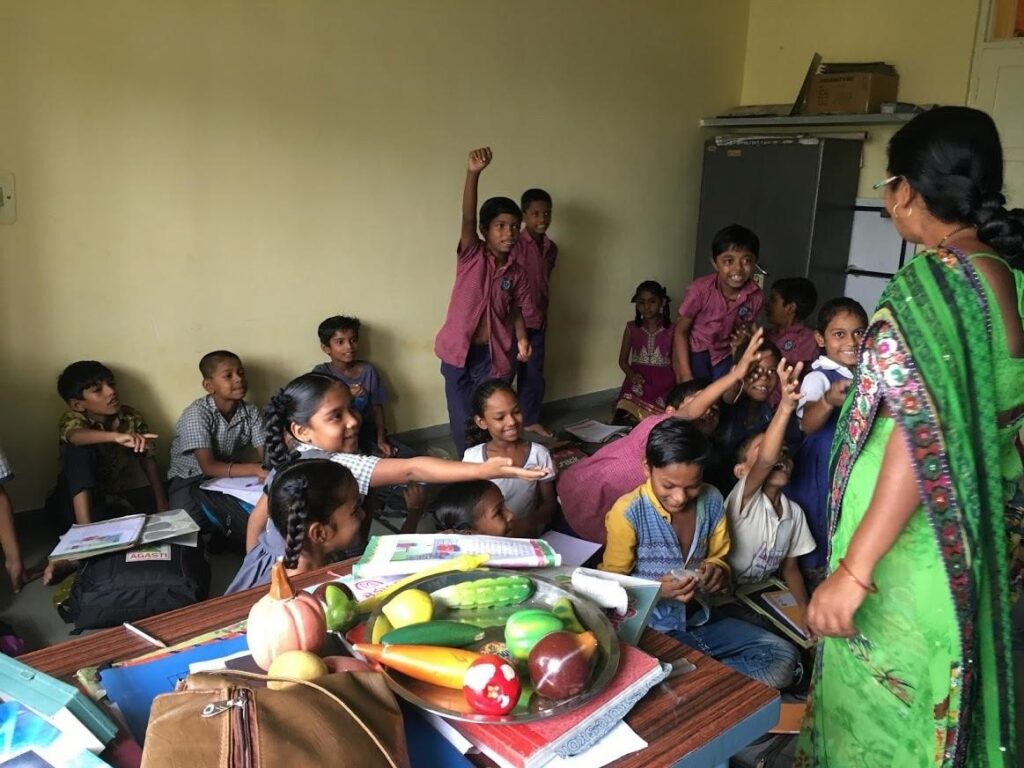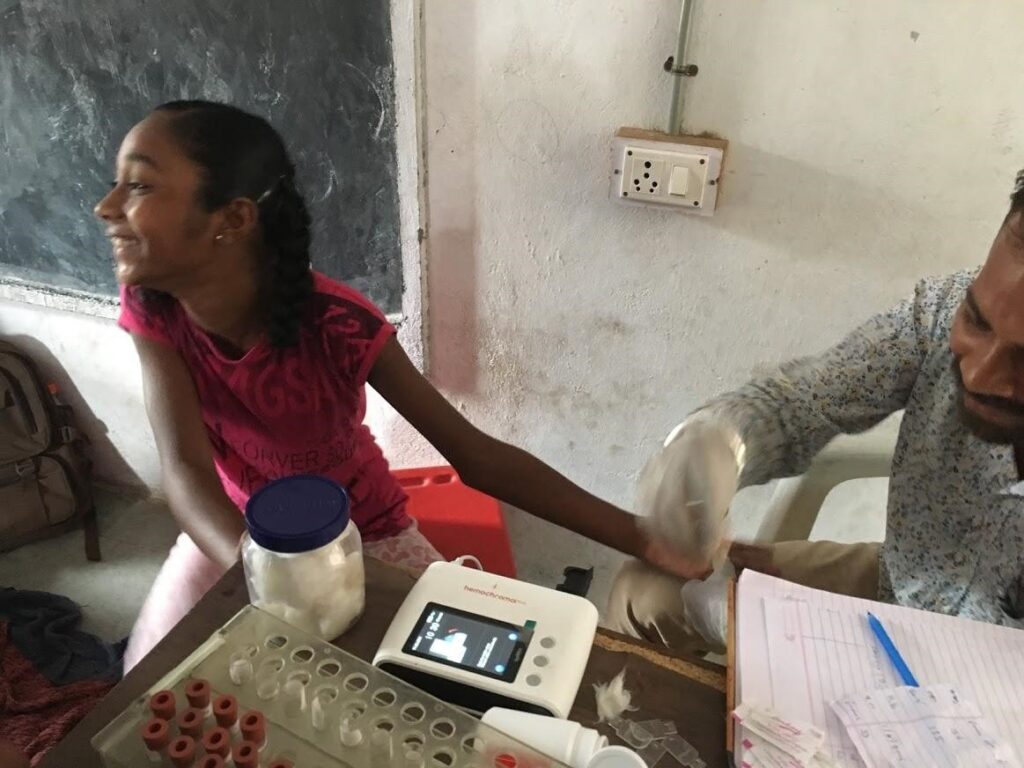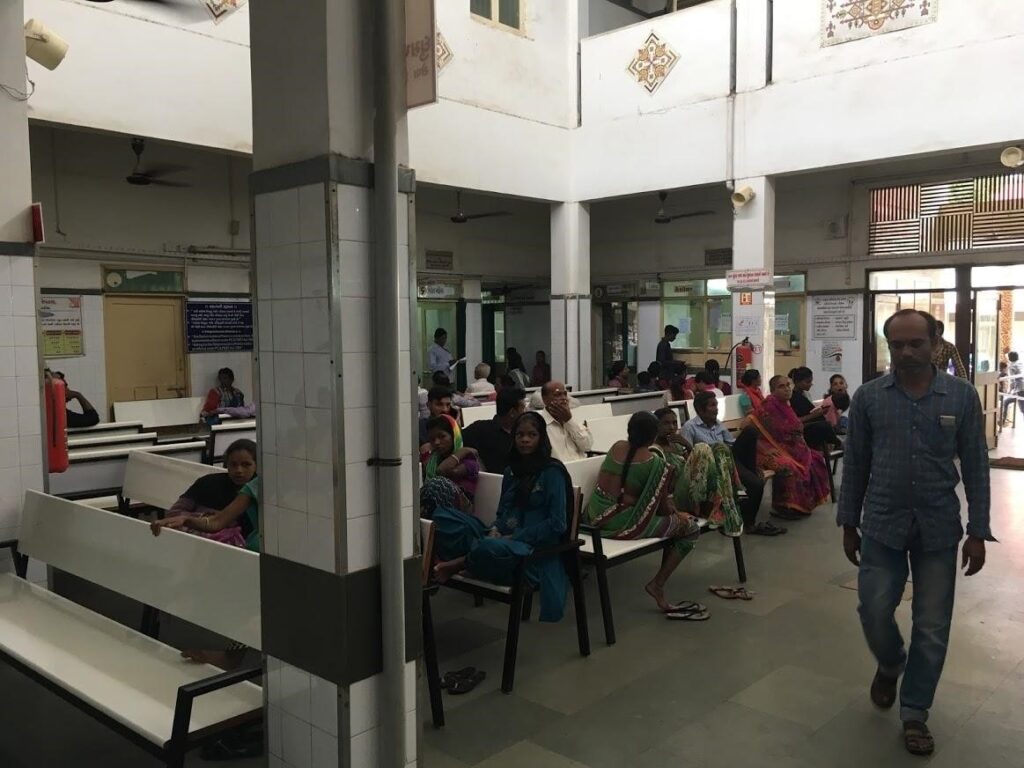Testimonials
ICA Youth “LEAD” Program
Testimonials
ICA Youth “LEAD” Program

Hi, my name is Om Gandhi, and I just had to share my incredible experience at LBP this summer!
Watch my testimonial video here.

Nishan Patel was one of the students who went on the youth LEAD program to LBP in 2023. He was also one of the two students who proactively collected donations for the organization before the trip, a very commendable effort. Hear his thoughts on the trip.
Watch his testimonial video here.
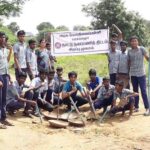
My Kodaganallur trip was truly a memorable experience for so many reasons. Most notable was that the trip afforded me a unique intellectual and cultural collaboration in a small village 8000 miles away from home, all under a wrapper of extraordinary hospitality. I will cherish this experience forever.
At the outset, I realized how rusty my Tamil was. It was humbling for me to see how brilliant and clever the Kodaganallur High Schoolers were, sometimes constrained to manifest these unique characteristics in a meaningful manner due to the rigidity of the school systems and extremely constraining socio-economic conditions. Of course, the disparity of education between my private schooling and the pedagogy presented to the Kodaganallur high schoolers showed me clearly how fortunate I was to receive a broader education in the US. Thus, during my visit, I did my best to bring the best parts of my education and what it has taught me through robotics, programming, and math, to Kodaganallur, with invaluable lessons and realizations along the way.
My trip effectively had three components:
• working with the high schoolers in the NSS (National Student Services),
• teaching various topics in engineering, robotics, math, and science to the
high schoolers and lower school children initially
• participating in the YOKE running camp with a few very talented local
runners.
My first two sessions were with the lower schoolers, where we did the basics of how to power on a lightbulb with wires as well as math puzzles and tricks that they may not necessarily find in school. We did two sessions in total, so the experience was quite limited but gave me a good idea of what was feasible and what was not. Unfortunately, the Raspberry robotics kits I had brought were not very conducive to the environment I taught in, as some mechanisms only work with a strong WiFi connection, but this was not an issue as I had plenty of other options to do.
With the high schoolers, our initial session was with electronics. I used the same Raspberry Pi kits I had brought with me at the previous session. With those, we did basic series and parallel circuits with LEDs, and by the end, there were some groups who were able to add many more LEDs in a row and have them all light up through complex circuitry; with no prior experience with these types of circuits, it was fascinating to see the complexity of the arrays the High Schoolers built with minimal guidance. This was meant to be a precursor to eventually designing a robot. However, the wheel motors were failing and I could not get them to power, so I had to eventually make a change of plans.
In the next few days, we worked on basic C++ syntax, and I realized that their school book was not explaining programming concepts in a way that was clear. In C++, we ran example programs and did a few activities with variables to develop a conceptual understanding of programming (how can you change the numbers stored in a variable, what do functions do, etc). In that same session, I was able to teach them about binary and how to change numbers from “decimal” to binary and other bases. We then connected this back to the initial day and saw how each “0” and “1” in binary could be represented as the LED on or LED off. I did a couple of demonstrations with the sensors I had initially brought for the robot; these included infrared distance sensors as well as a temperature sensor. One day, I created a set of logic puzzles and math problems of the type that would show up in some American math contests (these are called Olympiads), and everyone
grouped themselves into teams and tried to solve each of the problems as fast as possible. This was great to see, as they were not only enthusiastic and eager to participate but some of the teams were coming up with solutions extremely quickly and working at an extremely high level.
On the final day (as I thought a discussion-based session would be best after we’ve spent some time together), I introduced them to some of the pedagogy we have in the US Schools where the emphasis is on discussion and problem-solving. One specific competition I have participated in in the US is Future Problem Solvers, where we identify problems in a fictional society and devise solutions to help fix those problems. I thought this would be a good way for everyone to communicate what different issues they saw in their community/society as well as think through possible solutions for their main problem (for illustrations’ sake, the basic structure of the FPS competition is coming up with a wide range of issues, choosing the most “underlying” one out of them all, and formulating solutions for that underlying problem). Initially, I was somewhat hesitant regarding the feasibility of this idea, notwithstanding the language barrier but also whether they would be comfortable trying out such an activity. Of course, I was completely
wrong in thinking this, and they exceeded my expectations by far.
Not only did every group come up with a variety of prevalent issues, from rampant alcoholism to crime and poor working conditions for farmers, but eventually each group’s presentations turned into passionate debates and discussions about how solutions would be implemented, who would be harmed as a result of them, and occasionally if the solution was even effective. Everyone already had their own ideas and conceptions of the world they lived in, except the rigidity of their school system prevents any sort of discussion or liberty to espouse one’s own beliefs completely openly in a safe space. So naturally, once given the opportunity to do so, everyone would, as I witnessed on that day, unleash those latent thoughts and arguments, some groups coming up with clever and ambitious solutions. The discussion that the FPS activity facilitated was quite endearing, as everyone was passionately engaged and finally had a medium to voice their opinions. This also demonstrated to me that each one of them had the potential to change their communities’ flaws through intelligent means, yet they held back through socioeconomic limitations and unable to pursue their dreams. However, I hope that through the less than two weeks of interactions and exposure we had together, that they will be able to capitalize on their talents, smarts, and creativity to rise and change their world in whatever way possible.
Obviously, my experiences there were, by no means, one-way. I learned just as
much, if not more, from my days with them for their NSS project. We cleared areas for new plants, took out weeds, and in the final day, dug holes and planted various crops and grasses around the village. I also got to learn more about their lifestyle in the process. Many of them are very smart and have interests in STEM as I saw in the classroom sessions but are unable to carry out their ambitions due to preexisting socioeconomic conditions. Through this brief period of exchange in my time at Kodaganallur, they have motivated me to have fun in all parts of life and have the endurance to stay positive, and I hope I have inspired them to now realize that their schooling does not necessarily do justice to the intellectual capabilities that every one of them possesses.
Another point that I feel is significant was the unparalleled kindness and
hospitality I was welcomed with. Within the first day, all of them were so friendly and outgoing that I felt comfortable around them and had any nervousness or worry I may have started the trip with completely alleviated. This extends to everyone else too: other villagers, and especially the coaches and other members of the running camp. There was no hesitation, and everyone readily accepted me as another member of their groups and circles, a sense of friendliness almost impossible to find in Silicon Valley schools. Plus, everyone had a great sense of humor, and their playfulness always made me smile. For example, on the first day of the running camp, I was running with two other guys, and towards the end I heard one of them say to the other “Slow down now, we’ll catch him at the end and run past him” in Tamil, believing that I did not understand them. I couldn’t help but smile a little at this remark, and sure enough, the last stretch of the run was a heart-pounding sprint to the finish in which I was only barely able to come out in front after using all of my energy and then some more. Their hospitality and interest in taking care of each other, no matter how different we may be, is something that amazed me and something that I am extremely grateful for. Everyone went out of their way to ensure that I was comfortable and enjoying myself, even if they had only just met me. It’s not an understatement when I say that the friends I made in Kodaganallur are the nicest people whom I have had the pleasure of meeting, and I hope that we can stay as life-long friends. I have many of them on Whatsapp and have spoken to some of them a few times during quarantine. Due to school, the trip was much shorter than I would have liked, but as Dr. Seuss says, “Don’t cry because it’s over, smile because it happened.” The trip had a great impact on my life, and I hope that I have had even a fraction of that impact on everyone I have met.
When I return in the future, I’ll be sure to come with more experiences from my own life, more stories to share, and of course a better understanding of the Tamil language to share them with. Thank you to Chitra Aunty & YOKE Society for facilitating this wonderful experience, and to all the Kodaganallur High Schoolers, for forging everlasting memories with me, and to all the hospitable villagers who I am eternally thankful towards.
I truly cannot wait to return!
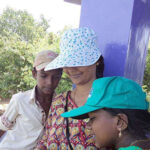
The busy Tirunelveli junction was conspicuously clean compared to the bedlam and dirt that one encounters in large city stations. An auto driven by affable Ganesh to ferry us to the village of Kodaganallur. I kept my eyes peeled trying to soak in as much as I could, but the heat was soporific and lulled us into a sleepy limbo. The auto jogged and jolted over a dirt track, entered a street and halted in front of a house. I could see an old temple at the end of the street and something inside me smiled with a sense of belonging. My friend popped out of her house, a hug and a beaming welcome followed and it felt as if I knew her for ages, but actually this was the first time I was meeting her in person!
2012, my first trip to Kodaganallur as Chitra had invited me to conduct a three-day storytelling camp for the children as part of the resource centre, set up by YOKE Society. The first camp was conducted in a room on the roof. As memories go, the first is always special! I met Nataraja and his sister. Priya was the student coordinator and helped me organise my material. Chitra herself had a system for the children and I found all her little structures fascinating to observe. There were teams and team leads’. Jobs for every team, younger ones looked after by the older children and so many other details taken care of.
I told them stories in a mix of English and Tamil, made them act out, perform small improv games and would finish with an art or craft activity. Soon these art and craft activities became a hit even more than my stories! That first year I even did a small puppet show for the children.
The next two years I returned to YOKE, carrying huge bags filled with crafts and stories. The group too became larger and larger and my craft activity that was eagerly awaited, made me scour the internet for ideas in preparation! I also had fun pushing them to do theatre and spontaneous speaking activities and learning to work with them as a group.
Every trip was loaded with memories, of eating sundal and buttermilk as snacks during the break or playing on the sandy river bed. Taking a trip to the Koonthakulam Bird sanctuary nearby and once even learning to play the Parai from the children. The combined summer camp watching children from Veeravanallur weaving was also an unforgettable experience.
I have made 4 or 5 trips to Kodagannalur and every visit I would see children engaged in new and interesting art, craft, dance or communication activity. Summer camp at YOKE was truly a blend of learning, doing, sharing and enjoying. Thank you Chitra and Vasu for inviting me to be a facilitator for YOKE summer camp Storytelling, I am enriched by it!
 |
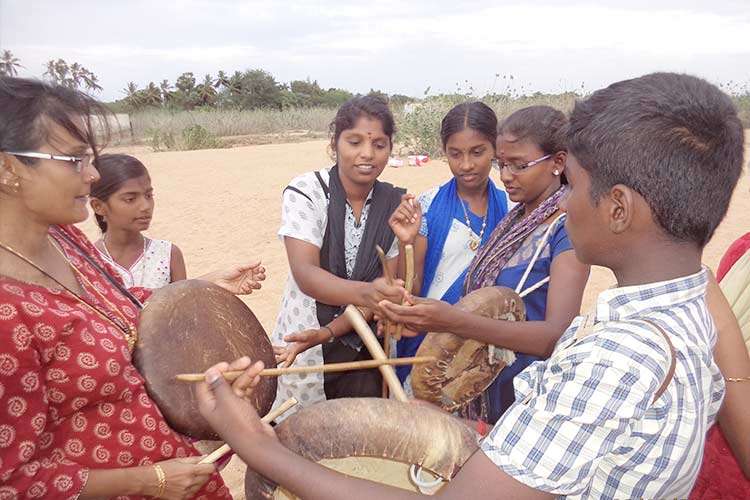 |
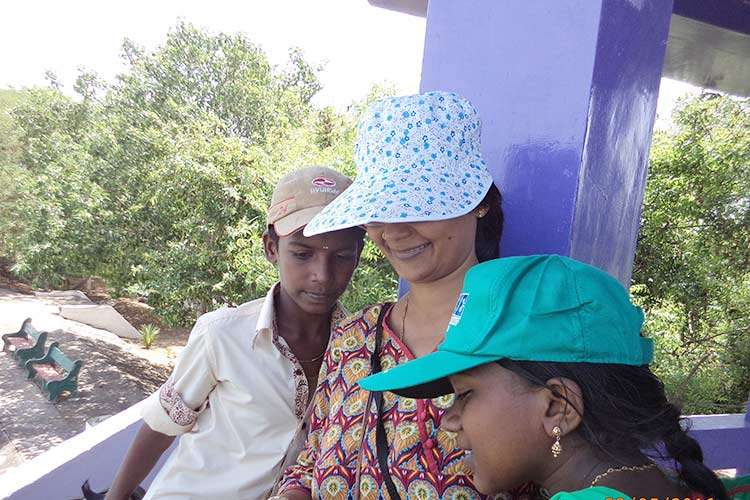 |

As I start writing this poem,
I am transported into a world of
Mesmerizing Music as mellifluous as birds chirping,
Noteworthy nature as breath-taking as a fairy wren’s feather,
Tall tradition as symbolic as an eagle,
And memories to cherish forever.
We started on a tour,
To vibrant, modest, tiny Kodaganallur.
Gorgeous days started with a walk through the countryside,
The enchanting farm reminded us the food they provide.
The food that we enjoy every day,
A farmer’s hard-work for 90 days.
Every time the winds silently passed by,
The plants swayed likegentle waves, as they captured our eye.
An opportunity to sing in temples came as a splendid surprise,
I would never have thought of this delightfulprize.
Ancient, celestial temples to visit.
Stunning Sculptures and Musical Pillars calling us to revisit.
Holy TamiraparaniRiver gladly swept across the joyful village,
Giving the diligent people a vantage.
A dip in the appealing river,
A charismatic experience that couldn’t be any better.
A music practice session in the majestic river,
A lifetime opportunity forever.
Having cat-walking peacocks as my walking partner,
Made my heart leap and flutter like a helicopter.
Feeding the peacocks was a merry event,
The best part of marvelous holidays spent.
With this, we concluded our incredible tour,
Having spent time with large–hearted people in Kodaganallur.
 |
 |
 |
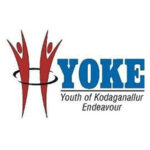
We acknowledge ICA as one of our partners on our homepage and ICA facilitates donations we get from the US. ICA’s channel of funding to YOKE is used in several activities that benefit the children, students in the neighboring communities, adults and environmental improvements.
Amongst other events and activities, YOKE society conducts an annual running event at Kodaganallur, a small village in Tirunelveli district, Tamil Nadu, India. The race was held in the Girls High School Playground this year which has recently been worked on, and ICA’s generous donation for the playground intiative has already started to benefit the students of the 3 high schools.

The trip to Snehalaya was quite nice. Getting there was very scenic, as there was a long drive in the countryside. Once we got there, we were introduced to the campus, and some of the children said hi. The managers of the campus were quite nice, and it was quite organized, there was always something to do. The language barrier was quite tough, but it was not too difficult to overcome, by using signs and other means. After a few days, the children became more comfortable with us, and we all played games together. It was actually quite sad when we left, as I had started to feel attached to the children, as we spent so long together, every hour of the day. I would say there were some hard things to overcome, like language, food, and atmosphere, but they are all part of why I went on the trip, so it was a success for me!

Volunteering in Snehalaya gave me a glimpse into the realities of life for a large majority of people in India. It gave me the opportunity to be a part of a real community of children who had come from all backgrounds, and enjoy their company while working with them on various projects and activities around the campus. I really enjoyed my stay, as the children and staff were extremely friendly and we were lucky enough to meet Snehalaya’s founder during the trip, who hosted a nice dinner and explained to us the purpose, origins, and story of the safe haven he had created. I learned more than independence - I learned humility, I learned friendship, and I learned how to adapt to situations I’ve never even imagined before. I was worried about the living conditions, but with the help of the staff, I was able to be comfortable around campus and in my dormitory. The 2 week excursion has been one of the most eye-opening trips I have made in my lifetime due to the sheer realism of it - and although at times I felt overwhelmed, I was always reassured to confidence by the smiles of the children and the well-words of the women helping care for everyone. Overall, the trip was an amazing experience where I gained a multitude of life lessons that I can take forward and apply to the rest of my life.
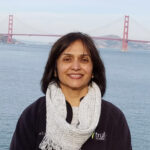
Dr. Prakash and Dr. Mandakini Amte’s dedication to build Lok Biradari Prakalp for Tribal community can be admired and understood through the depth of their sacrifices when you visit Hemalkasa. Starting work in a small hut without electricity for the first 20 years, winning tribal community’s faith in their treatment, performing surgeries under trees to gain confidence amazes when you see today’s well established community. To see generations of Amte family serving this community selflessly is a humble experience and inspires you to contribute to such a cause. Forever grateful to the Amte family for setting up examples for many generations to come!

I spent almost two months at Lok Biradari Prakalp during my gap year before starting medical school. Through ICA and the Desales I was connected with LBP leadership to develop a project based on their goals and drawing on my undergraduate training in public health. Under the LBP community health initiative, I worked with LBP staff to evaluate the nutritional status of the children in the ashramshala and to offer some recommendations to improve their health. Seeing the degree of community involvement and trust in the institution the Amtes and many others have built over time is truly inspiring! But even more impactful than what I learned professionally about low-resource healthcare delivery from the staff and from LBP's model, living at LBP and experiencing the challenges and also unparalleled joys of rural community life has been one of the highlights of my life.
My Marathi fluency was a huge asset in being able to communicate seamlessly with staff and children there, and to form lasting friendships! I found the accommodations to be very safe and clean, but would just humbly advise visitors to keep an open mind and a bit of a spirit of adventure to make the most of the experience! Even having lived in urban India for close to a year prior, my time in Hemalkasa was unlike anything I had experienced before, and it was truly a privilege to have the opportunity to live there and to try to contribute something nominal to LBP's inspiring mission! I am tremendously grateful for that opportunity, and have been able to carry many professional and personal lessons from my time at LBP into my medical training and continued work in low-resource healthcare research and advocacy!

The people of LBP clinic are kind, generous, and caring. They welcomed me with open arms, as they have with hundreds of other volunteers like me. I participated in the health clinic at Hemalkasa, assisting the staff physicians who were caring for the patients there. I saw pathology at Hemalkasa that I never saw during my years of medical training in the United States.
The people who seek care there are from local tribes. They live in secluded villages with little access to modern amenities. The LBP clinic has worked hard over the decades to build trust with these communities. We were able to join some of the ambulatory clinics that LBP hosted in and around these villages. Though the ride was bumpy, it was truly a special experience to see the way people lived in these communities to better understand their healthcare needs.
The team working at LBP are not only providing excellent medical care to the people in and around Hemalkasa, but they are constantly innovating to provide public health services to as many people as they can reach. Over the past few years, LBP has created satellite clinics, remote prenatal care programs, and many other such programs.
Spending time at LBP is sure to enrich your outlook on rural health, poverty, and service. I could not recommend the experience more highly.
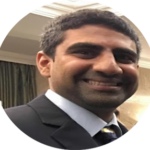

Lok Biradari Prakalp is a three-part NGO, dedicated to the poor and tribal people within the forests and villages in walking distance. Lok Biradari Prakalp hosts a hospital that sees hundreds of patients a day. Dr Prakash Amte, son of Baba Amte, runs the hospital. The story of his struggles in making Lok Biradari Prakalp is documented in the book Pathways to Light: a book I wish I had read prior to embarking on the trip. His son and daughter in law: Drs Dighant and Anagha Amte, are the current primary doctors on site. Although both are capable of minor surgeries, many patients need much more attention than they can give. In full irony, many of these patients also cannot afford that attention at a private or state-run hospital. So once a year, the Nagpur Rotary Club buses in around 30-40 surgeons, anesthesiologists, ophthalmologists, and medical residents for two days of surgery. This year, the doctors completed close to 230 surgeries total in the two days.
My name is Hans Desale, and I am a research scientist at a San Diego based drug discovery company: Receptos. I work in the biology department. After three years, I can honestly say I feel comfortable with a pipette or a needle in my hands. I’d also accrued quite a bit of vacation time and was looking for a place to use them. My sister is in her last year of medical school and was going to use her last bit of free time for her fourth trip to volunteer with the Hemalkasa Surgery Camp. The stars aligned, and I decided to tag along. It was a good thing she was there because I found myself in a world, I was completely unprepared for.
I made my flight to India as unenjoyable as possible. Upon landing in India, I was incredibly careful not to draw any more attention than necessary. For the contents of my bags included among the usual clothing and gifts, needles, syringes, and scalpel blades Receptos had donated for their use at Hemalkasa. Not wanting to be mistaken for a drug smuggler or member of an international crime syndicate, I proceeded through customs speaking in as much Marathi as I could and avoiding having to explain what I was carrying.
My sister and I spent in Pune with family trying to plan our trip to Hemalkasa. We bought our largely overpriced plane tickets to and from Nagpur at the last minute. Panicked for a bit, for we could not get in contact with Anagha to plan a ride from Nagpur. And had a last-minute packing exhibition because our supplies outweighed the domestic limits of India. In the end, we had booked a 5AM flight from Pune to Nagpur. But were still completely dependent on the efforts of others to get us to Hemalkasa.

Day 1: Travel and settling in
My sister and I reached our 5 AM flight on time thanks to the graciousness of my Uncle and Aunt. We walked out to the pickup area, and realized we had no way to contact our driver to Hemalkasa because our cell phone had no credit on it. Relieved to know our trip was off to an auspicious start, I started a search of the airport premises looking for a pay phone of sorts. My sister on the other hand, serendipitously met somebody she knew: Chanda Tai, a nurse from America my sister had previously worked with at Hemalkasa. Chanda Tai took us to her driver who got us in contact with our driver. On the close to 300-mile drive, our driver stopped twice to load the jeep with supplies and pick up four patients, which just goes to show, nothing is wasted at Hemalkasa, not even a ride from the airport.
Hemalkasa was a lot like I remember it. There were some tweaks: four new leopards, WI-FI, a new guesthouse, Bruno the dog. Though, the complex looked a lot like it did in 2005. On the journey, my sister had given me a little spiel on how things are done in Hemalkasa. Plus, this was not my first rodeo in India. So, I knew what to expect regarding what life was going to be like. We put our stuff down in our room and ventured over to the clinic to drop off the supplies we had brought with us and watch Dr. Dighant and Dr. Anagha Amte in action.
For those of us brought up in the health care system of America, the clinic at Hemalkasa may come as a shock. To gain the trust of the patients, the doctors dress as casually as possible. Despite the utmost attempts at sterility, the clinic does not seem as such (things like this are relative: many Americans require the super-sterile conditions in a hospital because a great deal of us are brought up in super-sterile environments). And with the sheer number of patients in the waiting room, one just must understand that the doctors are trying their hardest to fit everybody they can into their day. Regardless of daunting task ahead of them, the doctors give every patient in front of them their due. Nobody is barred from tests or medicine. Nobody is pushed through quickly to get through as many patients as possible.
My sister and I sat in a corner of the clinic for the afternoon; talking between each other trying to decipher the combination of Marathi and English medical acronyms. The doctors took time out to show us interesting cases, or specific signs and symptoms that led them to their diagnosis. When the clinic finally closed, Anagha and Dighant took us on a tour of the hospital and a bike ride of the surrounding forest and river. I personally am not known for my loquacious nature, so I mostly listened to the three doctors (my sister, Anagha, and Dighant) talk doctor speak and enjoyed just being out in nature. Aside from the road, much of the area surrounding Hemalkasa remains undeveloped, and it was a welcome escape from my normal San Diego routine.
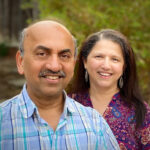
In January 2020, we had the privilege of spending three days in Hemalkasa. It was a very humbling experience for both of us. Road journey from Nagpur to Hemalkasa was long and took seven hours by a private taxi. Road conditions for the first 4-5 hours are quite good, but the last two hour stretch is through a forest area and the road is narrow. Since we were encouraged to reach Hemalkasa by 5 PM, we left Nagpur after having a heavy breakfast earlier in the day. During the second half of the journey, while driving through the rural area, there were very limited choices for decent places, to have lunch. The good part was that the driver was very familiar with that area, so he took us to a place, which served rice-plate. The place was family run and simple but clean.
Once we entered the premise of Lok Biradari Prakalpa (LBP), it was a complete change of scene, compared to the surroundings. This place is very well planned, clean and most of the buildings are white in color. Inside the compound there is a school, hospital, hostel, rooms for guests, and Amte home is right in the Center of everything.
We found that the rooms were simple and clean. Each room had 2-4 beds. Some had attached baths. All of them had western style toilets. Each bed had a frame with mosquito nets. While we were there, we did not have to use the net. Hot water (Solar heater) is readily available in the mornings for bath/shower. Outside the rooms in the corridor, there is a water filter with a cooler. So clean drinking water is readily available. It also has a drying line to hang your clothes (out of sight), if you wish to wash your clothes. There is a common kitchen which serves 3 simple yet tasty meals every day. All the school children, staff, visitors and Amte family, eat the same food. Front hall is used by Staff, Amte family and visitors. Another attached hall in the back is used by all the students.
The self-help system that they have instituted in the dining area and its seamless execution is very impressive. As one walks in for breakfast/lunch or dinner, one can pick up a clean steel plate, spoon and glass for water, serve food for self and have a meal. Simple and nourishing meals that are offered include roti, daal, rice, raita/salad, cooked vegetables. This abundance is shared with generosity and one can eat as much as one wants. After eating everyone is expected to wash utensils and keep it on the rack to dry. Kids in the residential school, from 3rd grade onwards start helping in various roles such as cutting vegetables, sweeping the area etc. It is a very structured community living arrangement, where older kids will help younger groups to wash their clothes or bathe.
During 3 days we met people visiting from all over Maharashtra. Amte family and everyone at LBP, are very approachable and friendly. We were in awe to see three generations of Amte family living in simplicity, eating the same food that everyone else eats, and their kids going to the same residential school at the Prakalpa.
Our room was closer to the girls' hostel. In the evening after school, as we walked around the track, it was a joy to see kids playing cricket or some other outdoors games. Around dusk, girls gather to sing many prayers, bhajans and songs they have learnt, in the compound of Girls’ hostel. It was such a pleasant and mesmerizing feeling , to experience that .
During our stay we visited the day school Sasdhana Vidyalay, at Nelgunda. At prakalpa, we had an opportunity to meet with Grade 11 and 12 students one evening. Next day one of us (Anita) taught music, a song and an English lesson to 2nd graders, while Shirish observed the math class for 8th grade. We also did a session with 11th and 12th graders during their English class. We answered lots of questions kids had.had. Most of them have not seen the outside world and are undecided about their future plans. Compared to kids in the US or from any city in India, these kids seem very innocent!
This visit left us feeling very energized even after returning to the US. Amte families’ pioneering efforts are paving the way for a brighter future for many tribal children. It will be a great place to go and volunteer your time in the clinic or working with students.
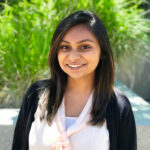
My time at SEWA Rural was truly transformative. A shy high schooler who was struggling to find herself, I entered this experience with apprehension; Would I like it in this new environment? How would I communicate with patrons? Being an outsider, would I be accepted in the community? In a moment of determination and resolution, I pushed these fears aside and signed up for the program. Two short months later I found myself walking into the gates of the Society for Education, Welfare and Action, Rural in Jhagadiya, India. I was immediately greeted and shown around, and I felt that extra care was taken to ensure I felt welcome. After the first few days of orientation, I had gained a better sense of the community upliftment programs such as the Sharda Mahila Vikas Society for the economic empowerment of women, the Comprehensive Eye Care Project for the health of the rural population, and the Vivekananda Grahmin Tekniki Kendra, an apprenticeship program for adolescents. I elected to split my time between the main hospital, in outpatient and surgical wards, and field visits. Both experiences gave me unique insights into the locals’ lives and their relationship with the SEWA Rural team. Six weeks seemed too short a visit and after my sophomore year of university, I made a second trip to the nonprofit organization. What drew me in was the fact that such a high functioning and sophisticated organization could feel so much like a family. While the SEWA Rural staff worked diligently to treat the community, both medicinally and through community upliftment, they ensured that each patient was treated with humility and respect regardless of their socioeconomic status. My experience abroad was valuable and rewarding and I would highly recommend it to anyone that has the opportunity.




